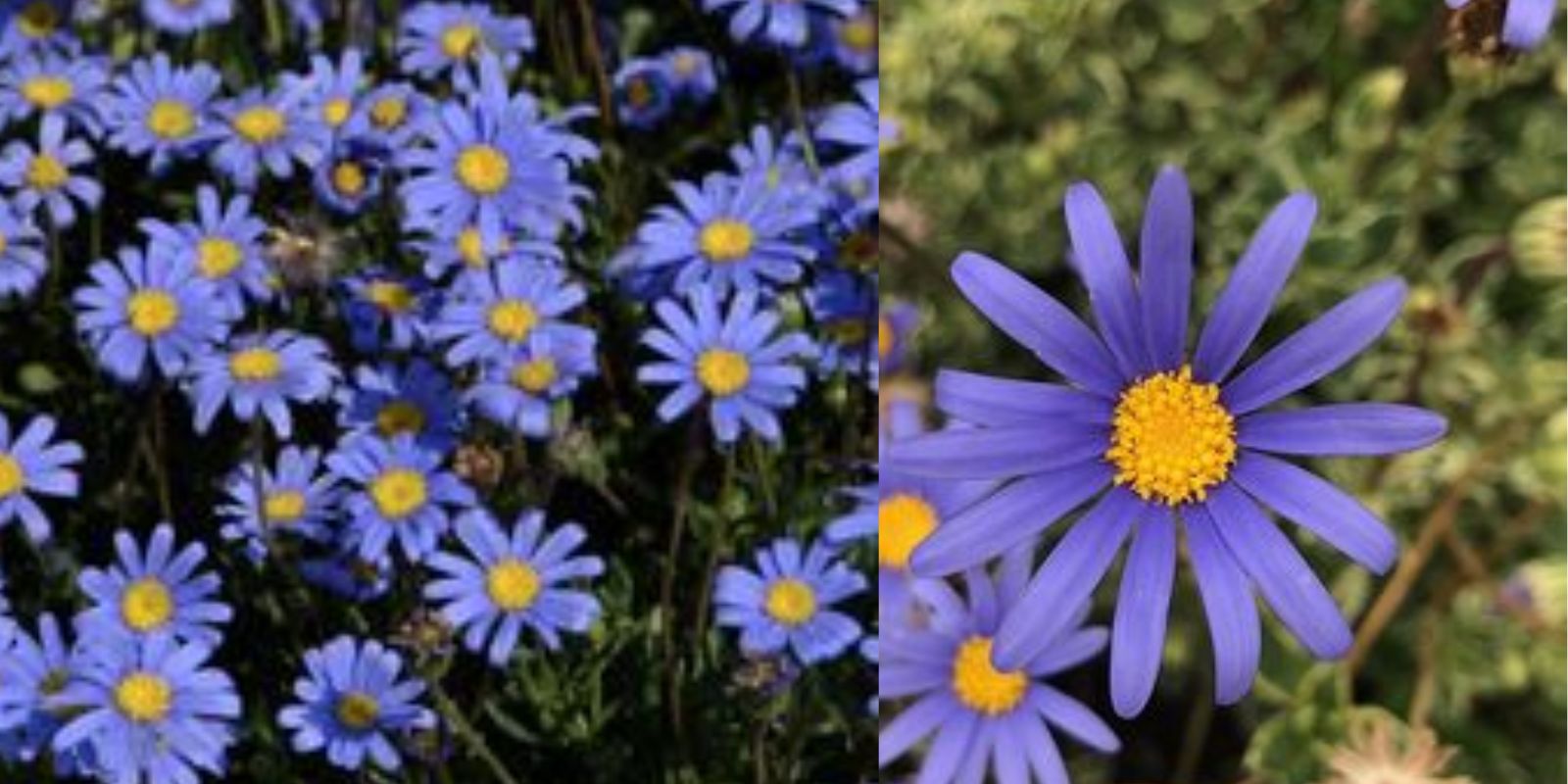The Blue Daisy, scientifically known as Felicia amelloides, is a delightful flowering plant that captivates with its vibrant blue blooms and graceful appearance. Native to South Africa, this species belongs to the Asteraceae family and is cherished by gardeners worldwide for its ornamental value and resilience. In this comprehensive guide, we will explore everything you need to know about cultivating and caring for the Blue Daisy, from its origins and characteristics to practical tips for growing it successfully in your garden.
Introduction to the Blue Daisy
Felicia amelloides, commonly referred to as the Blue Daisy, is a herbaceous perennial that typically grows in a compact, bushy form. It features slender, silvery-green leaves and produces an abundance of small, daisy-like flowers with striking blue petals surrounding a yellow center. These charming flowers bloom profusely throughout the growing season, adding a splash of vivid color to garden beds, borders, and containers.
Characteristics of Felicia amelloides
- Flowers: The Blue Daisy’s blooms are its most distinctive feature, showcasing hues of blue ranging from pale sky blue to deep violet-blue. Each flower measures about 1 inch in diameter and resembles a classic daisy with delicate petals.
- Foliage: The foliage of Felicia amelloides consists of narrow, lance-shaped leaves that are silvery-gray in color. These leaves complement the vibrant flowers and provide an attractive backdrop even when the plant is not in bloom.
- Growth Habit: This perennial plant typically forms a compact mound that ranges from 12 to 18 inches in height and spread. It has a bushy growth habit, making it ideal for edging, mass planting, or mixed perennial borders.
How to Grow Blue Daisy: Step-by-Step Guide
1. Sunlight Requirements
Ideal Conditions: Blue Daisies thrive in full sun to partial shade. Ensure they receive at least 6 hours of sunlight daily for optimal flowering and healthy growth.
2. Soil Preparation
Well-Drained Soil: Prepare well-draining soil that is moderately fertile. Blue Daisies prefer soil with a pH level ranging from slightly acidic to neutral. Incorporate organic matter such as compost to improve soil structure and fertility.
3. Planting
Timing: Plant Blue Daisies in spring after the danger of frost has passed. Choose a location with good air circulation to prevent fungal diseases.
Spacing: Space plants 12 to 18 inches apart, depending on the desired density of your planting area.
4. Watering
Watering Needs: Water Blue Daisies regularly during the growing season, ensuring the soil remains evenly moist but not waterlogged. Reduce watering in hot weather to prevent root rot.
5. Fertilization
Fertilizer Application: Apply a balanced fertilizer, such as a 10-10-10 NPK formulation, in early spring and again after the first flush of blooms to promote continuous flowering. Follow package instructions for application rates.
6. Pruning and Deadheading
Maintenance: Deadhead spent flowers regularly to encourage continuous blooming throughout the season. Trim back any leggy growth to maintain a compact and tidy appearance.
7. Overwintering
Winter Care: In colder climates, provide mulch around the base of plants to protect roots from freezing temperatures. Blue Daisies are generally hardy to USDA zones 8-10 and may require additional protection in colder zones.
Benefits of Growing Blue Daisy
1. Ornamental Value
Blue Daisies are prized for their stunning flowers, which add a pop of vibrant color to gardens and landscapes. They attract butterflies and beneficial pollinators, contributing to a biodiverse and thriving garden ecosystem.
2. Low Maintenance
This perennial plant is relatively low-maintenance once established, requiring minimal watering and fertilization. Its compact growth habit and continuous flowering make it a favorite among busy gardeners.
3. Versatility
Blue Daisies are versatile and can be grown in various garden settings, including borders, rock gardens, containers, and as ground covers. They pair well with other sun-loving perennials and annuals, enhancing garden designs with their cheerful blooms.
Common Pests and Diseases
1. Pests
Blue Daisies are generally resistant to most pests. However, occasional aphids or spider mites may appear. Use insecticidal soap or neem oil to control pest infestations without harming beneficial insects.
2. Diseases
Monitor for signs of fungal diseases such as powdery mildew, especially in humid conditions. Ensure good air circulation around plants and avoid overhead watering to minimize disease risks.
Conclusion
In conclusion, cultivating Blue Daisy (Felicia amelloides) in your garden offers a wealth of benefits, from its stunning blue flowers to its resilience and ease of care. Whether you’re a novice gardener looking to add color to your landscape or an experienced enthusiast seeking a versatile perennial, Blue Daisy is sure to delight with its charm and adaptability. By following the tips and guidelines provided in this article, you can successfully grow and enjoy this beautiful plant in your own outdoor space.
Motivation:
Explore the beauty and versatility of Blue Daisy in your garden and share your experiences with our gardening community. Let’s celebrate the joy of gardening and the splendor of nature together!

